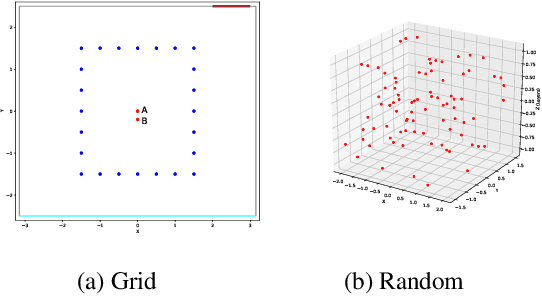Riccardo F. Gramaccioni
Rethinking Multi-User Semantic Communications with Deep Generative Models
May 16, 2024



Abstract:In recent years, novel communication strategies have emerged to face the challenges that the increased number of connected devices and the higher quality of transmitted information are posing. Among them, semantic communication obtained promising results especially when combined with state-of-the-art deep generative models, such as large language or diffusion models, able to regenerate content from extremely compressed semantic information. However, most of these approaches focus on single-user scenarios processing the received content at the receiver on top of conventional communication systems. In this paper, we propose to go beyond these methods by developing a novel generative semantic communication framework tailored for multi-user scenarios. This system assigns the channel to users knowing that the lost information can be filled in with a diffusion model at the receivers. Under this innovative perspective, OFDMA systems should not aim to transmit the largest part of information, but solely the bits necessary to the generative model to semantically regenerate the missing ones. The thorough experimental evaluation shows the capabilities of the novel diffusion model and the effectiveness of the proposed framework, leading towards a GenAI-based next generation of communications.
SyncFusion: Multimodal Onset-synchronized Video-to-Audio Foley Synthesis
Oct 23, 2023Abstract:Sound design involves creatively selecting, recording, and editing sound effects for various media like cinema, video games, and virtual/augmented reality. One of the most time-consuming steps when designing sound is synchronizing audio with video. In some cases, environmental recordings from video shoots are available, which can aid in the process. However, in video games and animations, no reference audio exists, requiring manual annotation of event timings from the video. We propose a system to extract repetitive actions onsets from a video, which are then used - in conjunction with audio or textual embeddings - to condition a diffusion model trained to generate a new synchronized sound effects audio track. In this way, we leave complete creative control to the sound designer while removing the burden of synchronization with video. Furthermore, editing the onset track or changing the conditioning embedding requires much less effort than editing the audio track itself, simplifying the sonification process. We provide sound examples, source code, and pretrained models to faciliate reproducibility
L3DAS21 Challenge: Machine Learning for 3D Audio Signal Processing
Apr 29, 2021
Abstract:The L3DAS21 Challenge is aimed at encouraging and fostering collaborative research on machine learning for 3D audio signal processing, with particular focus on 3D speech enhancement (SE) and 3D sound localization and detection (SELD). Alongside with the challenge, we release the L3DAS21 dataset, a 65 hours 3D audio corpus, accompanied with a Python API that facilitates the data usage and results submission stage. Usually, machine learning approaches to 3D audio tasks are based on single-perspective Ambisonics recordings or on arrays of single-capsule microphones. We propose, instead, a novel multichannel audio configuration based multiple-source and multiple-perspective Ambisonics recordings, performed with an array of two first-order Ambisonics microphones. To the best of our knowledge, it is the first time that a dual-mic Ambisonics configuration is used for these tasks. We provide baseline models and results for both tasks, obtained with state-of-the-art architectures: FaSNet for SE and SELDNet for SELD. This report is aimed at providing all needed information to participate in the L3DAS21 Challenge, illustrating the details of the L3DAS21 dataset, the challenge tasks and the baseline models.
 Add to Chrome
Add to Chrome Add to Firefox
Add to Firefox Add to Edge
Add to Edge